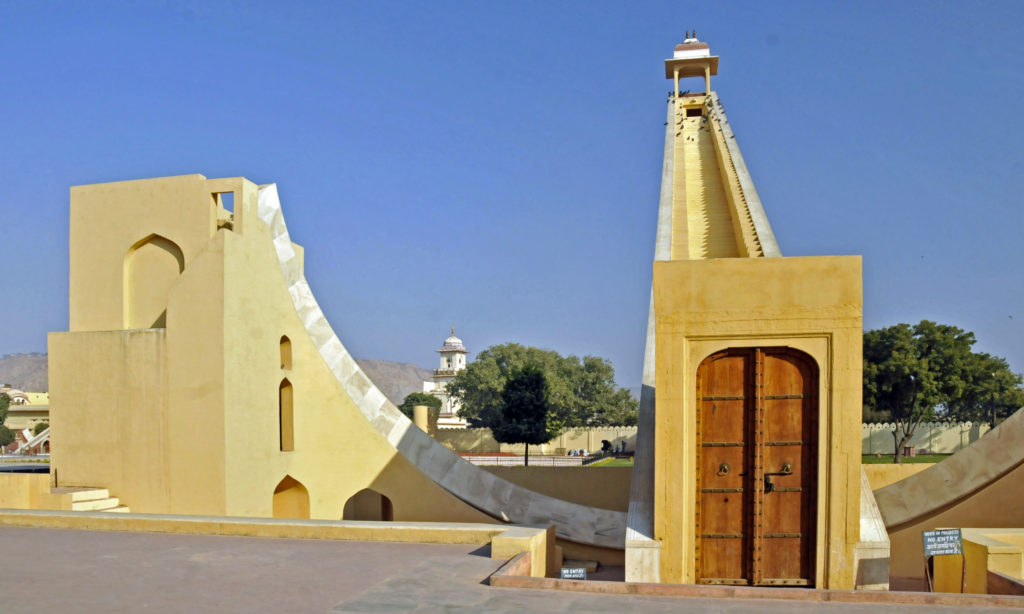
Jai Singh II is best known as the Hindu ruler who extended the reach of his kingdom and founded the city of Jaipur. A monumental site in that city, named in his honor, shows the extraordinary reach of his mind.
In 1699, 11-year-old Jai Singh II became ruler of the Amber Kingdom in northwest India, subject to control by the Mughal Emperor in Delhi. By 1727, he had established autonomy from the weakening Empire and moved his capital to Jaipur. Jai Singh greatly expanded the size of his kingdom, becoming the most important ruler of his time in northern India.
Under the Mughals, Jai Singh learned that the Islamic tables predicting astronomical events did not always align with those events. As a result, Jai Singh studied astronomy and mathematics and brought that learning to his people. To facilitate better predictions, he spent six years constructing an observatory in Jaipur called Jantar Mantar (Calculating Instrument). The four-acre site near the palace includes 19 enormous astronomical instruments constructed of stone and marble. The largest instrument is the 88-foot-tall Vrihat Samrat Yantra (Great King of Instruments). Pointed at the North Star at an angle of 27 degrees, it is the world’s largest stone sundial, marking time in two-second intervals. Other instruments allow various celestial measurements, such as the altitude of celestial bodies at particular times. Based on these measurements, Jai Singh II published a remarkably accurate set of tables called Zij Muhammadshah for predicting eclipses and the times of sunrises and sunsets. Impending eclipses and monsoons were announced from a cupula atop Vrihat Samrat Yantra. Jai Singh established Jantar Mantars in four other Indian cities, but the one in Jaipur is the largest and grandest. Jaipur’s Jantar Mantar fell into disuse after about 1800, but was completely restored in 2006 and is a UNESCO World Heritage site.
Comments are closed.